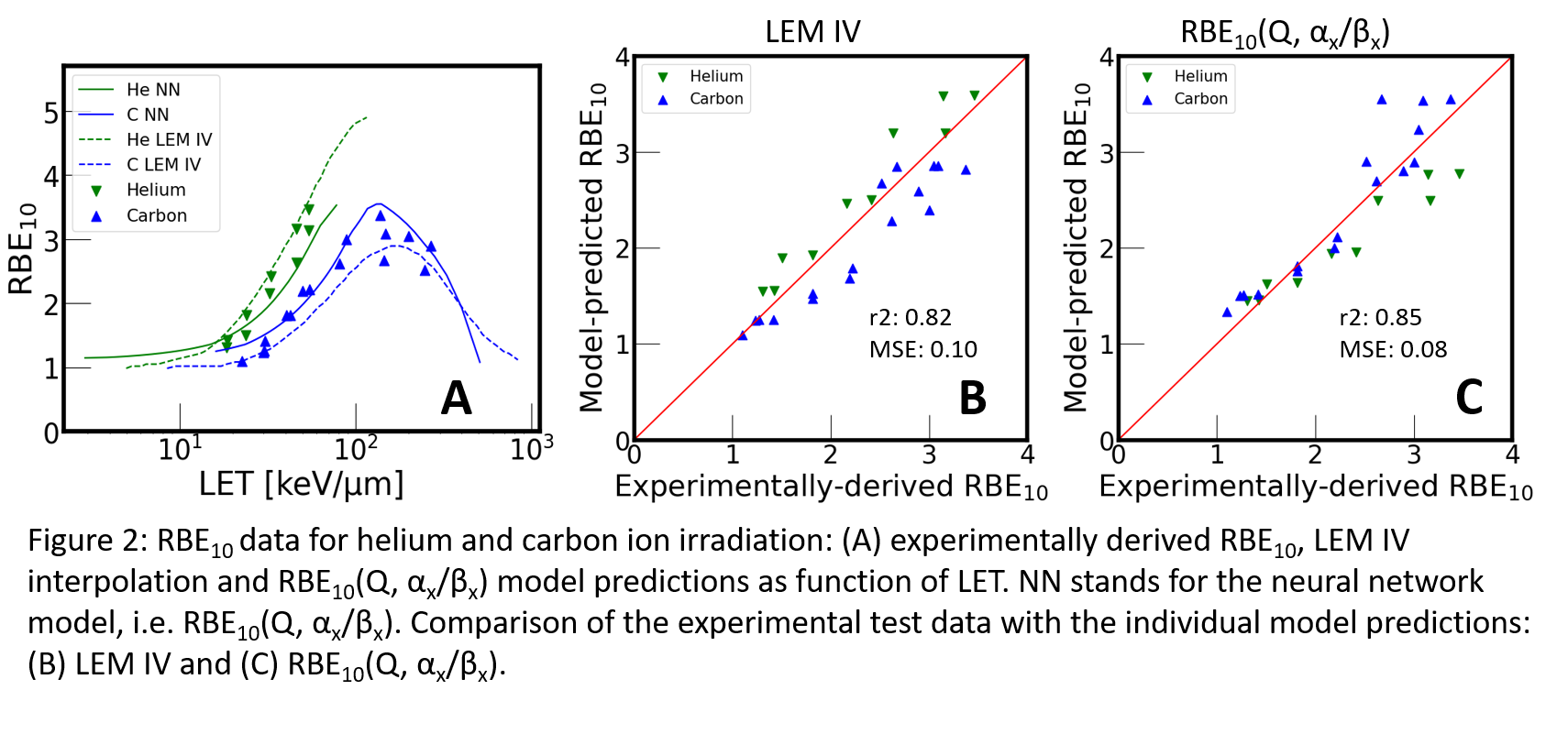A concept for ion type-independent RBE modelling in proton and light ion therapy
PD-0245
Abstract
A concept for ion type-independent RBE modelling in proton and light ion therapy
Authors: Liheng Tian1, Armin Luehr1
1Technical University Dortmund, Physics, Dortmund, Germany
Show Affiliations
Hide Affiliations
Purpose or Objective
Recently, the beam quality Q = Z^2/E (Z = ion charge, E = energy) has shown its potential for ion-independent relative biological effectiveness (RBE) modeling. In contrast to the conventionally used linear energy transfer (LET), Q may help to transfer RBE knowledge of, e.g., carbon to other ions as has been demonstrated for the clinical Q range of protons. However, so far, the so-called overkilling domain was excluded.
This work studies in a broad LET range (including overkilling) the general validity of the Q concept, i.e. RBE values are similar for different ions if they have the same Q value.
Material and Methods
Experimental in-vitro data from the particle irradiation data ensemble (PIDE) were selected for RBE calculation if the following criteria were met: 1) monoenergetic irradiation, 2) asynchronous cell cycle, 3) ion range in water at least 25 µm, 4) positive αx and βx value, 5) ion charge Z < 11, 6) more than 5 data points for the same ion type.
RBE values were calculated using the α and β values recorded in PIDE for two endpoints: RBEdx (RBE at a reference photon dose dx) and RBE10 (RBE at cell survival of 10%) and were regarded as ground truth in this study.
Neural network (NN) models with low complexity were built to predict RBEdx values using different combinations of clinically available input candidate: LET, Q and αx/βx. For training, 80% of the selected PIDE data were used and the remaining data for testing. The prediction power of those models was compared using both the coefficient of determination (r2) and the mean square error (MSE) of the residual. Ion-dependence of the models was tested using the analysis of variance (confidence level: 95%).
RBE10(Q, αx/βx) was retrained with all selected PIDE data except those used in a publication (Elsässer et al., 2010) in which RBE10 was predicted with the local effect model (LEM IV), these data were used to test the model and to compare with LEM IV.
Results
In total, 284 irradiation data points for proton, helium, carbon and neon ions were selected for modelling.
The NN models performed best for dx between 2-4 Gy and resulted in smooth curved surfaces (Figure 1A). The model using Q and αx/βx as input, RBE2Gy(Q, αx/βx), showed the optimal prediction power (figure 1B) and was tested to be not significantly ion-dependent (p: 0.58). The counterpart LET model, RBE2Gy(LET, αx/βx), performed worse (figure 1C) and was significantly ion-dependent (p < 0.001).

For the RBE10, the performance of the Q model is comparable to that of the LEM IV interpolation, cf. Figure2 .
.
Conclusion
The ion-independent Q concept was verified for four ions in a clinically relevant LET range including over-killing. A purely data-driven Q model made RBE predictions comparable to a mechanistic model (LEM IV) regardless of particle type. Thus, the Q concept may help to reduce uncertainty in RBE-based treatment planning in the future by transferring clinical RBE knowledge between ions.